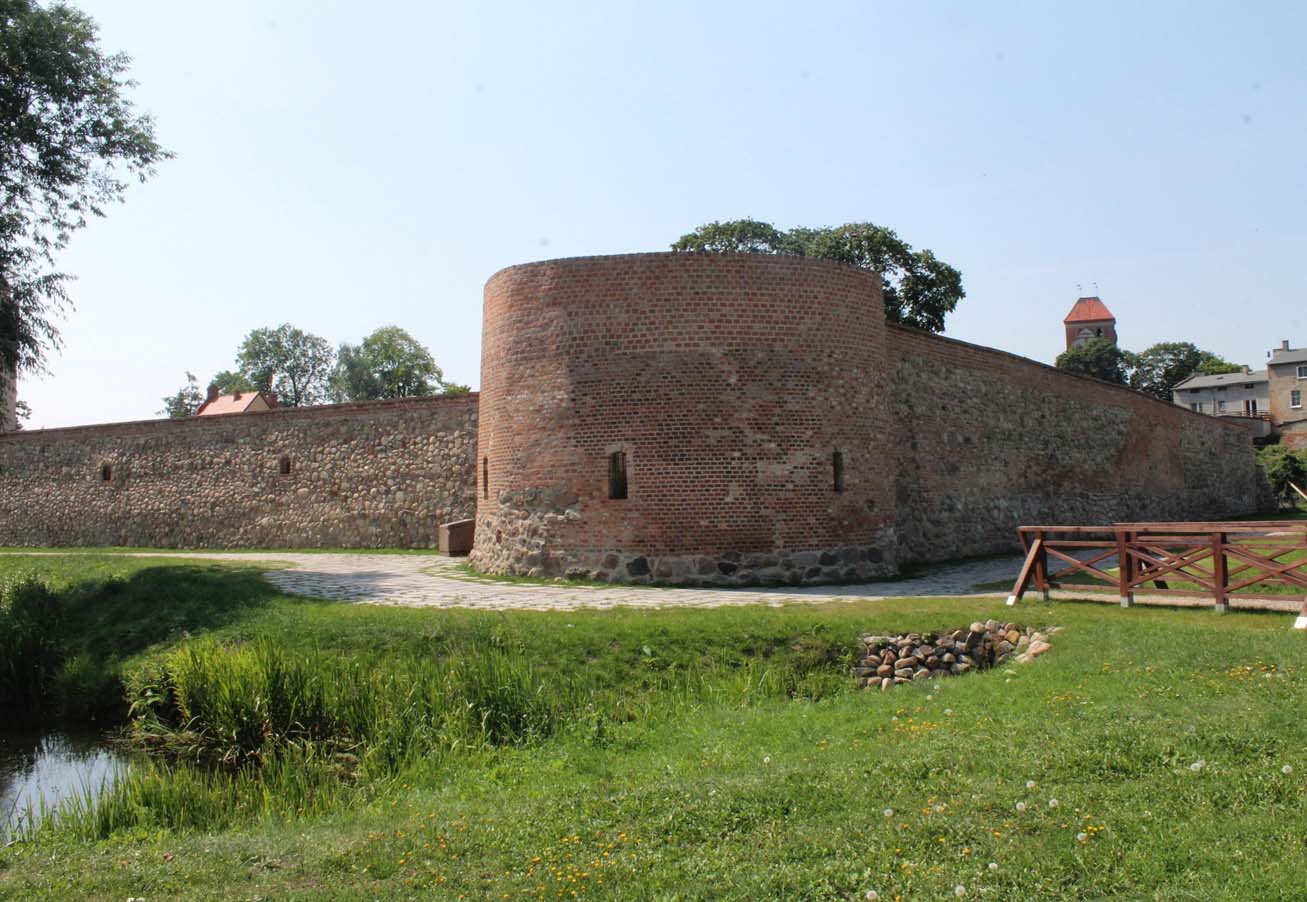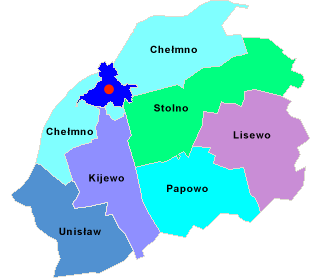|
Chełmno
Chełmno (; older ; , formerly also ) is a town in northern Poland near the Vistula river with 18,915 inhabitants as of December 2021. It is the seat of the Chełmno County in the Kuyavian-Pomeranian Voivodeship. Due to its regional importance in the Middle Ages, the town gave its name to the entire area, Chełmno Land (and later an administrative unit of the Kingdom of Poland, the Chełmno Voivodeship), the local Catholic diocese and Kulm law, a municipal form of government for over 180 cities and towns in Central Europe, most notably Warsaw, Gdańsk, Toruń, Königsberg, Olsztyn, Płock and Klaipėda. It possesses a well-preserved historic Old Town, listed as a Historic Monument of Poland, with landmark Gothic churches and a Renaissance town hall. It was an important education center in the early modern period, and the place of pioneering surgical operations by renown Polish 19th-century surgeon Ludwik Rydygier. Name The city's name ''Chełmno'' comes from ''chelm'', t ... [...More Info...] [...Related Items...] OR: [Wikipedia] [Google] [Baidu] |
Chełmno Land
Chełmno land (, or Kulmerland) is a part of the historical region of Pomerelia, located in central-northern Poland. Chełmno land is named after the city of Chełmno. The largest city in the region is Toruń; another bigger city is Grudziądz. It is located on the right bank of the Vistula river, from the mouth of the Drwęca (southern boundary) to the Osa, Warmian-Masurian Voivodeship, Osa (northern). Its eastern frontier is Lubawa, Lubawa Land. The region, depending on the period and interpretation, may be included in other larger regions: Mazovia, Pomerania or Prussia (region), Prussia. Currently in Poland it is classified as part of Pomerania, due to strong connections with Gdańsk Pomerania in recent centuries, with which it is collectively called the Vistula Pomerania (''Pomorze Nadwiślańskie''), although it also has close ties with neighboring Kuyavia. As a result it forms part of the Kuyavian-Pomeranian Voivodship, although a small part of the Chełmno Land is loca ... [...More Info...] [...Related Items...] OR: [Wikipedia] [Google] [Baidu] |
Chełmno Voivodeship
The Chełmno Voivodeship () was a unit of administrative division and local government in the Crown of the Kingdom of Poland, Kingdom of Poland since 1454/1466 until the Partitions of Poland in 1772/1793. Its capital was at Chełmno. Together with the Pomeranian Voivodeship (1466–1772), Pomeranian and Malbork Voivodeship, Malbork Voivodeships and the Prince-Bishopric of Warmia it formed the province of Royal Prussia, and with several other voivodeships it formed the Greater Poland Province, Crown of the Kingdom of Poland, Greater Poland Province. History The Chełmno Land had been part of the Polish Duchy of Masovia since 1138. It was occupied by pagan Old Prussians, Old Prussian tribes in 1216, who struggled against their Christianization instigated by Bishop Christian of Oliva. After several unsuccessful attempts to reconquer Chełmno, Duke Konrad I of Masovia in 1226 called for support by the Teutonic Knights, who indeed approached and started a Prussian campaign, after the ... [...More Info...] [...Related Items...] OR: [Wikipedia] [Google] [Baidu] |
Roman Catholic Diocese Of Chełmno
The Diocese of Chełmno (; ) was a Catholic diocese in Chełmno Land, founded in 1243 and disbanded in 1992."Diocese of Pelplin" ''''. David M. Cheney. Retrieved February 29, 2016"Diocese of Pelplin" ''GCatholic.org''. Gabriel Chow. Retrieved February 29, 2016 History * It was founded in 1243 by the |
Kulm Law
Kulm law, Culm law or Chełmno Law (; ; ) was a legal constitution for a municipal form of government used in several Central European cities in the Middle Ages and early modern period. It was initiated on 28 December 1233 in the Monastic State of the Teutonic Knights by Grand Master of the Teutonic Order, Grand Master Hermann von Salza and Hermann Balk when the towns of Toruń (''Thorn'') and Chełmno (''Kulm'') received German town law, in particular as a modification of Magdeburg rights. Named after the town it was signed in, the original document (''Kulmer Handfeste'') was lost in 1244 when the town hall burned due to an attack by Świętopełk II, Duke of Pomerania. The renewed charter of 1 October 1251 was based on a copy in Toruń, but the rights were reduced. The town hall in Chełmno was the seat of the higher court of Chełmno law until 1458. This type of law was mostly granted by the Teutonic Order to cities within their monastic state, and by the neighboring Duchy of M ... [...More Info...] [...Related Items...] OR: [Wikipedia] [Google] [Baidu] |
Chełmno County
Chełmno County () is a unit of territorial administration and local government (powiat) in Kuyavian-Pomeranian Voivodeship, north-central Poland. It came into being on 1 January 1999, as a result of the Polish local government reforms adopted in 1998. Its administrative seat and only town is Chełmno, which lies north of Toruń and north-east of Bydgoszcz. The county covers an area of . As of 2019 its total population is 52,018, out of which the population of Chełmno is 19,605 and the rural population is 32,413. The county includes the protected area called Chełmno Landscape Park, which stretches along the right bank of the Vistula river. Neighbouring counties Chełmno County is bordered by Świecie County to the north, Grudziądz County and Wąbrzeźno County to the east, Toruń County to the south, and Bydgoszcz County to the south-west. Administrative division The county is subdivided into seven gmina The gmina (Polish: , plural ''gminy'' ) is the basic unit of the ... [...More Info...] [...Related Items...] OR: [Wikipedia] [Google] [Baidu] |
Ludwik Rydygier
Ludwik Antoni Rydygier (21 August 1850 – 25 June 1920) was a Polish surgeon, professor of medicine, rector of the University of Lwów and Brigadier General of the Polish Army. He was one of the most distinguished Polish and worldwide known surgeons in the late 19th and early 20th century. Biography Early life and education Born in Dusocin (then officially ''Dossoczyn'') near Grudziądz (then officially ''Graudenz'') in the Prussian Partition of Poland, a territory annexed by Prussia during the Partitions of Poland in the late 18th century. He was one of 13 children of Karol and Elżbieta Riedigier. Since childhood he accented his Polish origin and identity. He attended the ''Collegium Marianum'' in Pelplin, and between 1859 and 1861 he attended gymnasium in Chojnice (then officially ''Konitz''), then also the gymnasium in Chełmno (then officially ''Kulm''), where he graduated in 1869. In years 1869–1874 he studied medical sciences at the University of Greifswald. ... [...More Info...] [...Related Items...] OR: [Wikipedia] [Google] [Baidu] |
Historic Monument (Poland)
Historic Monument (, ) is one of several categories of objects of cultural heritage in Poland, objects of cultural heritage (in the singular, ''zabytek'') in Poland. To be recognized as a Polish historic monument, an object must be declared such by the President of Poland. The term "historic monument" was introduced into Polish law in 1990, and the first Historic Monuments were declared by President Lech Wałęsa in 1994. List The National Heritage Board of Poland maintains the official list. References {{reflist Objects of cultural heritage in Poland Law of Poland ... [...More Info...] [...Related Items...] OR: [Wikipedia] [Google] [Baidu] |
Voivodeship Road
According to classes and categories of public roads in Poland, a voivodeship A voivodeship ( ) or voivodate is the area administered by a voivode (governor) in several countries of central and eastern Europe. Voivodeships have existed since medieval times and the area of extent of voivodeship resembles that of a duchy in ... road () is a category of roads one step below national roads in importance. The roads are numbered from 100 to 993. Total length of voivodeship roads in Poland is of which are unpaved (2008).Transport – activity results in 2008 , Główny Urząd Statystyczny List of voivodeship roads Current list of voivodeship road ...[...More Info...] [...Related Items...] OR: [Wikipedia] [Google] [Baidu] |
Voivodeships Of Poland
A voivodeship ( ; ; plural: ) is the highest-level Administrative divisions of Poland, administrative division of Poland, corresponding to a province in many other countries. The term has been in use since the 14th century and is commonly translated into English as "province". The administrative divisions of Poland, Polish local government reforms adopted in 1998, which went into effect on 1 January 1999, reduced the number of voivodeships to sixteen. These 16 replaced the 49 subdivisions of the Polish People's Republic, former voivodeships that had existed from 1 July 1975, and bear a greater resemblance (in territory, but not in name) to the voivodeships that existed between 1950 and 1975. Today's voivodeships are mostly named after historical and geographical regions, while those prior to 1998 generally took their names from the cities on which they were centered. The new units range in area from under (Opole Voivodeship) to over (Masovian Voivodeship), and in population ... [...More Info...] [...Related Items...] OR: [Wikipedia] [Google] [Baidu] |
Toruń
Toruń is a city on the Vistula River in north-central Poland and a World Heritage Sites of Poland, UNESCO World Heritage Site. Its population was 196,935 as of December 2021. Previously, it was the capital of the Toruń Voivodeship (1975–1998) and the Pomeranian Voivodeship (1919–1939), Pomeranian Voivodeship (1921–1945). Since 1999, Toruń has been a seat of the local government of the Kuyavian-Pomeranian Voivodeship and is one of its two capitals, together with Bydgoszcz. The cities and neighboring counties form the Bydgoszcz–Toruń twin city metropolitan area. Toruń is one of the oldest cities in Poland; it was first settled in the 8th century and in 1233 was expanded by the Teutonic Knights. For centuries it was home to people of diverse backgrounds and religions. From 1264 until 1411, Toruń was part of the Hanseatic League and by the 17th century a leading trading point, which greatly affected the city's architecture, ranging from Brick Gothic to Mannerism, Mann ... [...More Info...] [...Related Items...] OR: [Wikipedia] [Google] [Baidu] |
Vistula
The Vistula (; ) is the longest river in Poland and the ninth-longest in Europe, at in length. Its drainage basin, extending into three other countries apart from Poland, covers , of which is in Poland. The Vistula rises at Barania Góra in the south of Poland, above sea level in the Silesian Beskids (western part of Carpathian Mountains), where it begins with the White Little Vistula (''Biała Wisełka'') and the Black Little Vistula (''Czarna Wisełka''). It flows through Poland's largest cities, including Kraków, Sandomierz, Warsaw, Płock, Włocławek, Toruń, Bydgoszcz, Świecie, Grudziądz, Tczew and Gdańsk. It empties into the Vistula Lagoon (''Zalew Wiślany'') or directly into the Gdańsk Bay of the Baltic Sea with a river delta, delta of six main branches (Leniwka, Przekop, Śmiała Wisła, Martwa Wisła, Nogat and Szkarpawa). The river has many associations with culture of Poland, Polish culture, history and national identity. It is Poland's most important wat ... [...More Info...] [...Related Items...] OR: [Wikipedia] [Google] [Baidu] |
Central European Time
Central European Time (CET) is a standard time of Central, and parts of Western Europe, which is one hour ahead of Coordinated Universal Time (UTC). The UTC offset, time offset from UTC can be written as UTC+01:00. It is used in most parts of Europe and in several African countries. CET is also known as Middle European Time (MET, German: :de:Mitteleuropäische Zeit, MEZ) and by colloquial names such as Amsterdam Time, Berlin Time, Brussels Time, Budapest Time, Madrid Time, Paris Time, Stockholm Time, Rome Time, Prague time, Warsaw Time or Romance Standard Time (RST). The 15th meridian east is the central axis per UTC+01:00 in the world system of time zones. As of 2023, all member state of the European Union, member states of the European Union observe summer time (daylight saving time), from the last Sunday in March to the last Sunday in October. States within the CET area switch to Central European Summer Time (CEST, UTC+02:00) for the summer. The next change to CET is scheduled ... [...More Info...] [...Related Items...] OR: [Wikipedia] [Google] [Baidu] |



